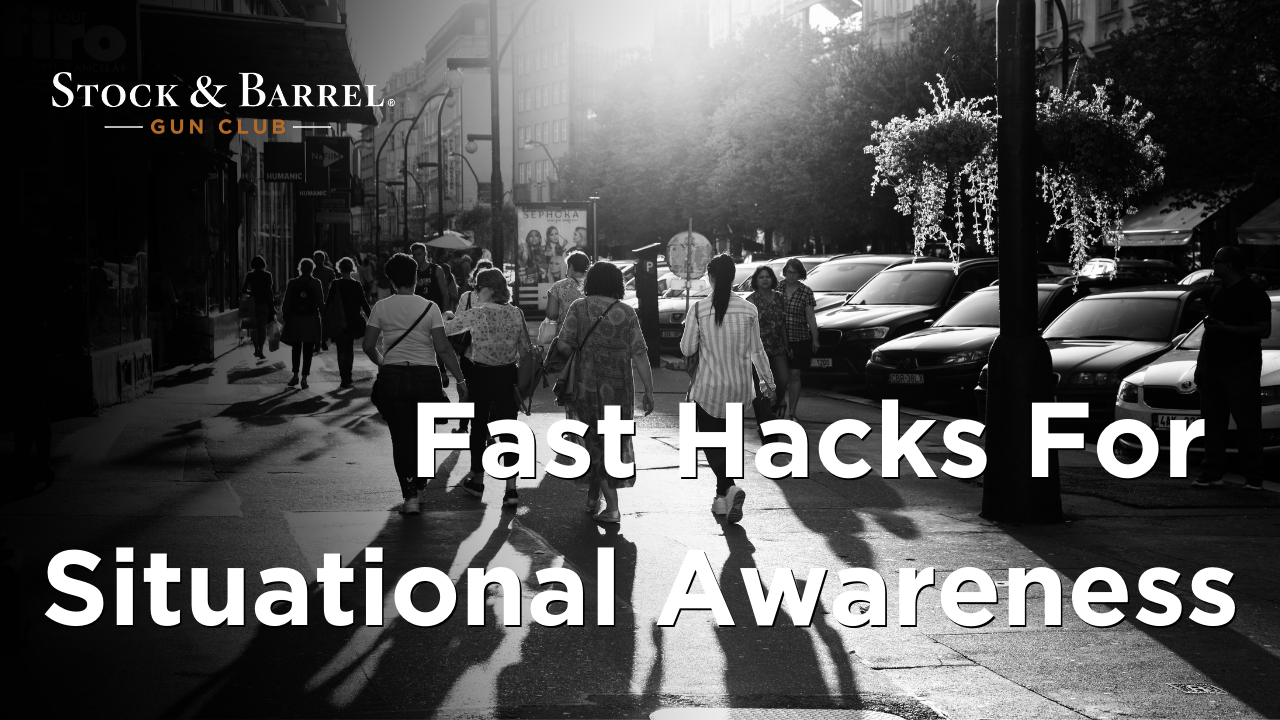In the world of self-defense and personal protection, there is constant discussion about situational awareness. Unfortunately, most of that conversation revolves around beating people over the head with the notion that you should simply “have” it. There is rarely, if ever, any true discussion about how to learn or implement this critical life-saving skill.
But make no mistake, situational awareness is absolutely a skill – one that modern life has seemed to breed out of most people, and like any skill, it must be learned and practiced before it becomes second nature with any degree of proficiency.
Fortunately, the tenets are not complex or difficult to understand, and getting started only requires fundamental knowledge of a few key principles.
Observing Something New
Situational awareness is, in its most fundamental form, the result of observing something new or unfamiliar and comparing it to similar situations that are familiar based on your past experiences.
Try this exercise: close your eyes and imagine your favorite restaurant at 6 PM on a Friday evening. Did you picture crowded tables, probably occupied by even-numbered groups of people? Wait staff and bussers hustling to clear empty tables? Did you hear clinking dishes or muddled conversations or low music in the background?
What if I asked you to imagine a football stadium at halftime during a championship game? The point is that everyone has common experiences to draw from to determine what different social situations are supposed to look and feel like.
Companies like Emergence Disrupt and Orbis Operations, who teach situational awareness professionally, refer to this as a baseline. You have a mental baseline for what that crowded restaurant is supposed to be like, just like you have a baseline for just about every social situation you wind up in on a daily basis. Most of us never give this any conscious thought, but it’s these baselines that form the foundation of situational awareness.
Anything that falls too far outside of these baselines is what gets our attention and is referred to as anomalies. The anomalies are what make us double-take, make the hairs on our neck stand up, or give us the proverbial “bad feeling” we don’t always understand. If something feels “off” about a person, place or situation, it’s likely due to an anomalous social cue, or a collection of them that add up to a result that makes you less-than-comfortable.
The Four Questions To Ask
When faced with an individual, group of people, or a situation that makes you think twice, you can distill your assessment down into four basic questions that address basic situational and human factors:
1) “Is this appropriate for the time (of day, week, year)?”
Someone wearing a long coat or big puffy jacket in warm weather could just be a sign of particular fashion sense. But it could also be an indicator of someone trying to conceal a weapon or alter their stature/form to be less identifiable.
2) “Is this appropriate for the environment I’m in?”
A group of three or four people standing next to a parked car talking may be perfectly normal outside of a grocery store midday. Is it still normal inside your employer’s parking structure at midnight?
3) “Is this person’s distance appropriate?”
Americans like their space. All else being equal, most people prefer to maintain a “personal bubble” of approximately one yard from others during routine social interactions (family and intimate partners notwithstanding). Someone standing too close to you is an immediate red flag for many people and will make most of us uncomfortable if our bubble is violated for too long.
Of course, different places have different baselines. Personal bubbles are much smaller on a subway car in mid-town Manhattan than on main street in rural Montana. Either way, it’s not unwise to be wary of strangers who immediately place themselves inside the normal bubble for your region.
4) “What is this person’s demeanor?”
A statistic published by the University of Texas Permian Basin cites work by body language specialist Albert Mehrabian, who came up with the 55/38/7 formula, which estimates 55% of interpersonal communication is through body language alone. This could include everything from stance to upper body posture to facial expressions – all of which factor into what we consider as a person’s overall demeanor.
Watch a boxing match or MMA fight and look at how the fighters stand: feet apart, knees bent, upper body leaned slightly forward, chin slightly dipped, eyes slightly squinted. All of these individual posture cues stem from evolutionary hard-wires based on optimal body posture to receive or deliver impact.
There are absolutely groups of people who, through years of conditioning or life experience, have adopted this kind of stance as a normal baseline. Professional athletes, military veterans, even people who’ve lived through a handful of bar fights or schoolyard brawls might all simply wind up in this stance (or portions of it) without any second thought. But these cues may also telegraph malicious intent.
Situational Awareness Is Ever Present
For better or worse, situational awareness is not a yes or no test question. It’s a running calculation where the final answer depends on a series of constantly and rapidly changing variables. The good news is that it’s easy to practice literally all day every day, as appropriate for your lifestyle. The more you do it, the faster your assessments get, and the more confident you get in them. It does not, and should not, translate into paranoia or living in constant fear. Situational awareness is simply a formulaic approach to doing what you already do all the time: observing the people and places you encounter in your daily routine.
You may be interested in these classes….
-
Travel Safety & Security in Eagan and Chanhassen
-
MN Multi-State Permit to Carry in Eagan and Chanhassen
-
Empowerment Strategies for Women in Eagan and Chanhassen
-
Less Than Lethal Defense Training in Eagan and Chanhassen





